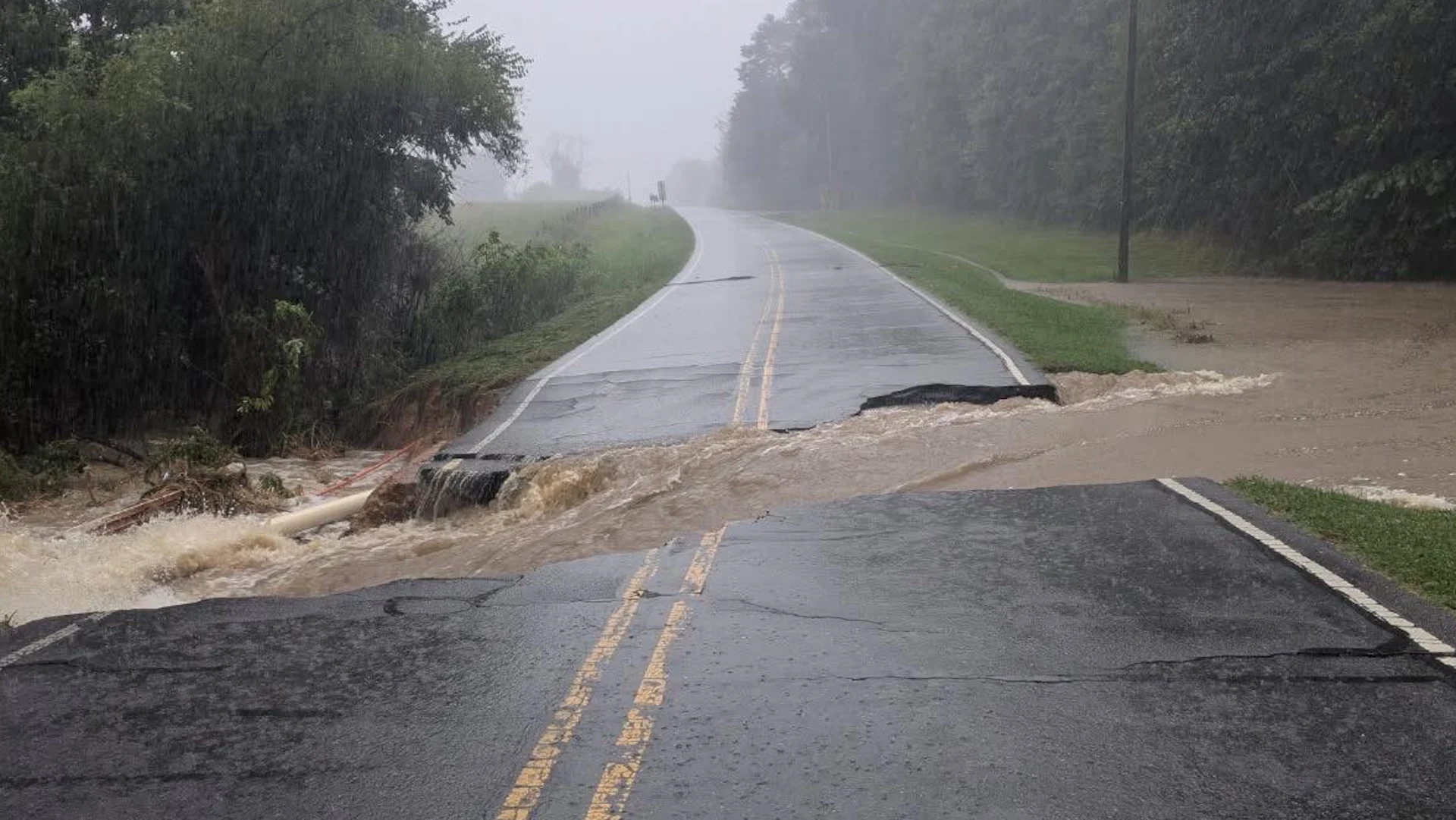
Why has 2025 seen so much widespread, intense flash flooding?
This year has seen a seemingly endless string of flash floods across the U.S. The root causes are as diverse as they are complex
Waters on Texas’ Guadalupe River rose nearly 10 metres in under two hours on the morning of July 4, leading to a historic deluge that killed more than 100 people—one of the United States’ worst flash flood tragedies in decades.
A town in Kentucky saw 340 mm of rain in three days in April. A tropical storm surged North Carolina’s Haw River to record heights. A historic downpour in New York City sent water cascading through its iconic subway system.
The dizzying pace of flood stories in recent weeks has made it hard to keep track of which downpour is happening where. Why have there been so many flash floods across the U.S. so far this year?
DON'T MISS: What is a flash flood? A civil engineer explains
Nearly a year’s worth of warnings in just 7 months
Forecasters have issued a record number of flash flood warnings across the United States so far in 2025.
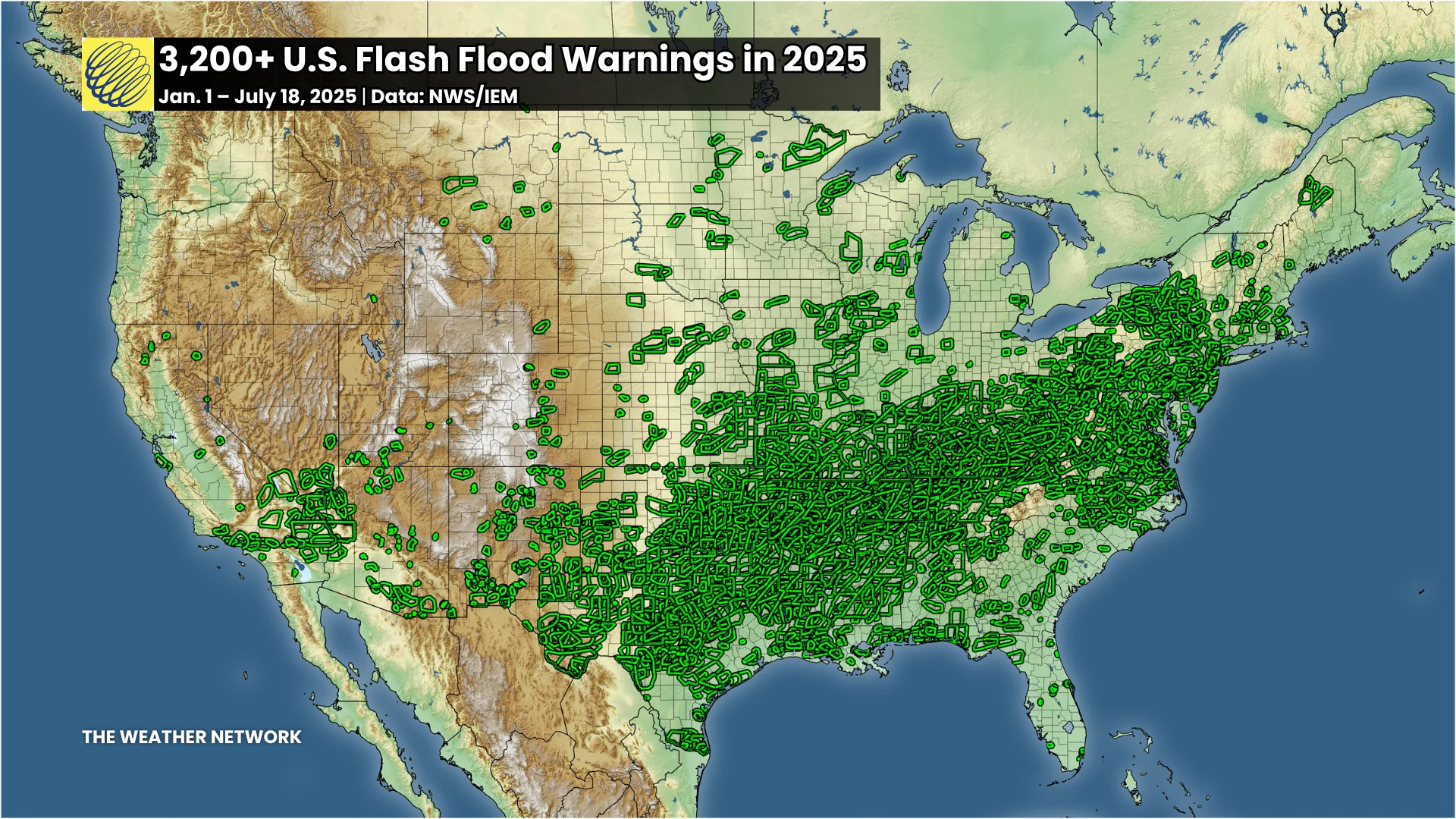
Between Jan. 1 and July 18, the U.S. National Weather Service (NWS) issued more than 3,200 flash flood warnings from coast to coast. To put that into perspective, the NWS has issued an average of 3,938 flash flood warnings per year for the past ten years—and it’s only the middle of July.
Nearly 50 of those warnings were considered “flash flood emergencies,” which is enhanced wording meant to convey the severity of flooding unfolding across a certain region.
Widespread and often deadly flooding
Deadly floods have captured headlines every couple of weeks this year.
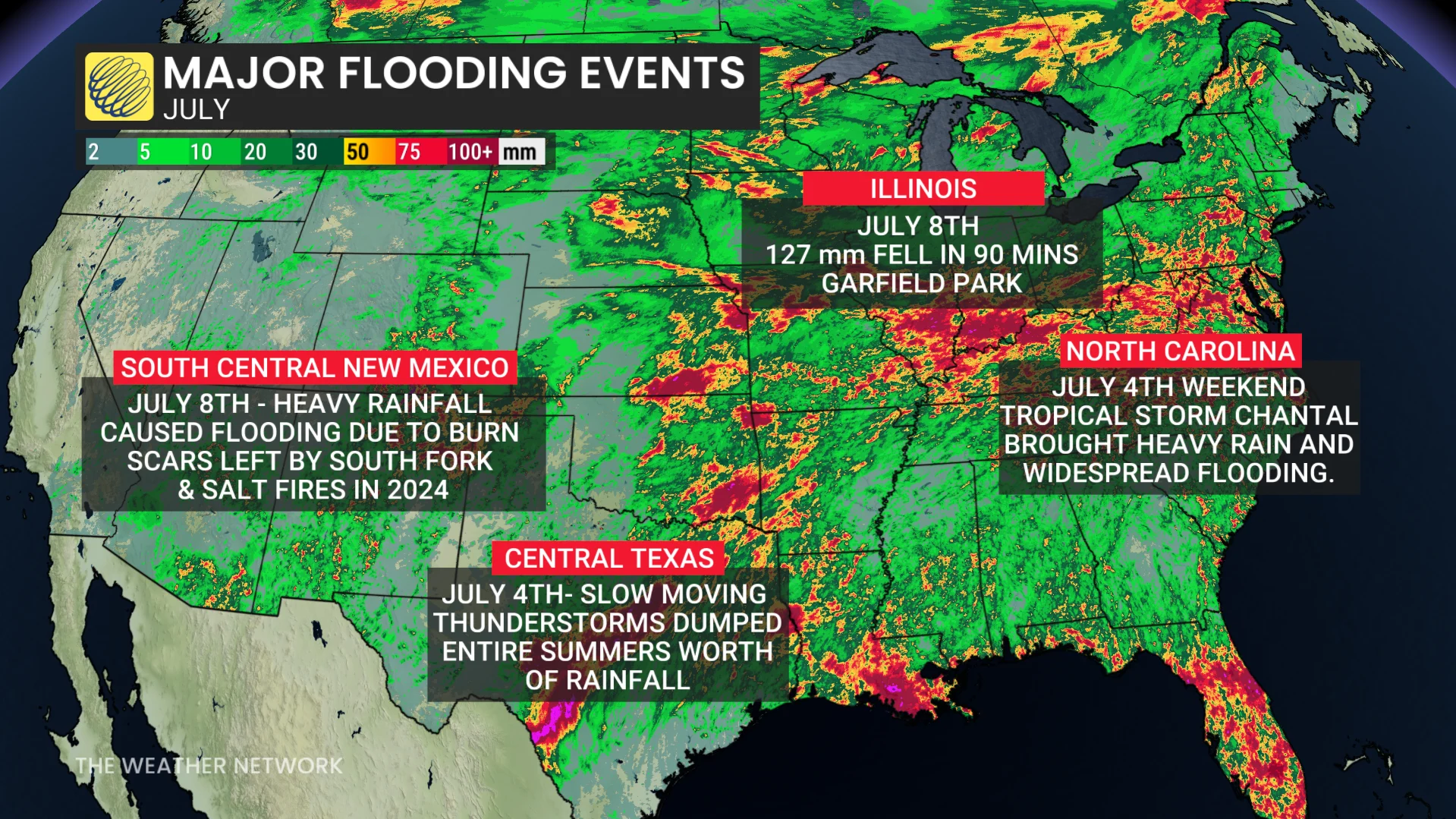
A budding nor’easter brought severe flooding to Kentucky and West Virginia in the middle of February. National Public Radio (NPR) reported that the floods killed a dozen people after 150-200+ mm of rain fell across the region.
Continuous bouts of severe weather plagued the Mid-South in March and April, pushing the U.S. tornado count higher than it’s been in over a decade. Those severe storms dropped tremendous rains, with one town in Kentucky recording nearly 400 mm of rain over the course of four days.
Central Texas continues to clean up after intense downpours pushed the Guadalupe River west of San Antonio to rise almost 10 metres in under two hours on July 4. The remnants of Tropical Storm Barry fuelled a round of slow-moving training thunderstorms—cells that repeatedly develop and move over the same communities.
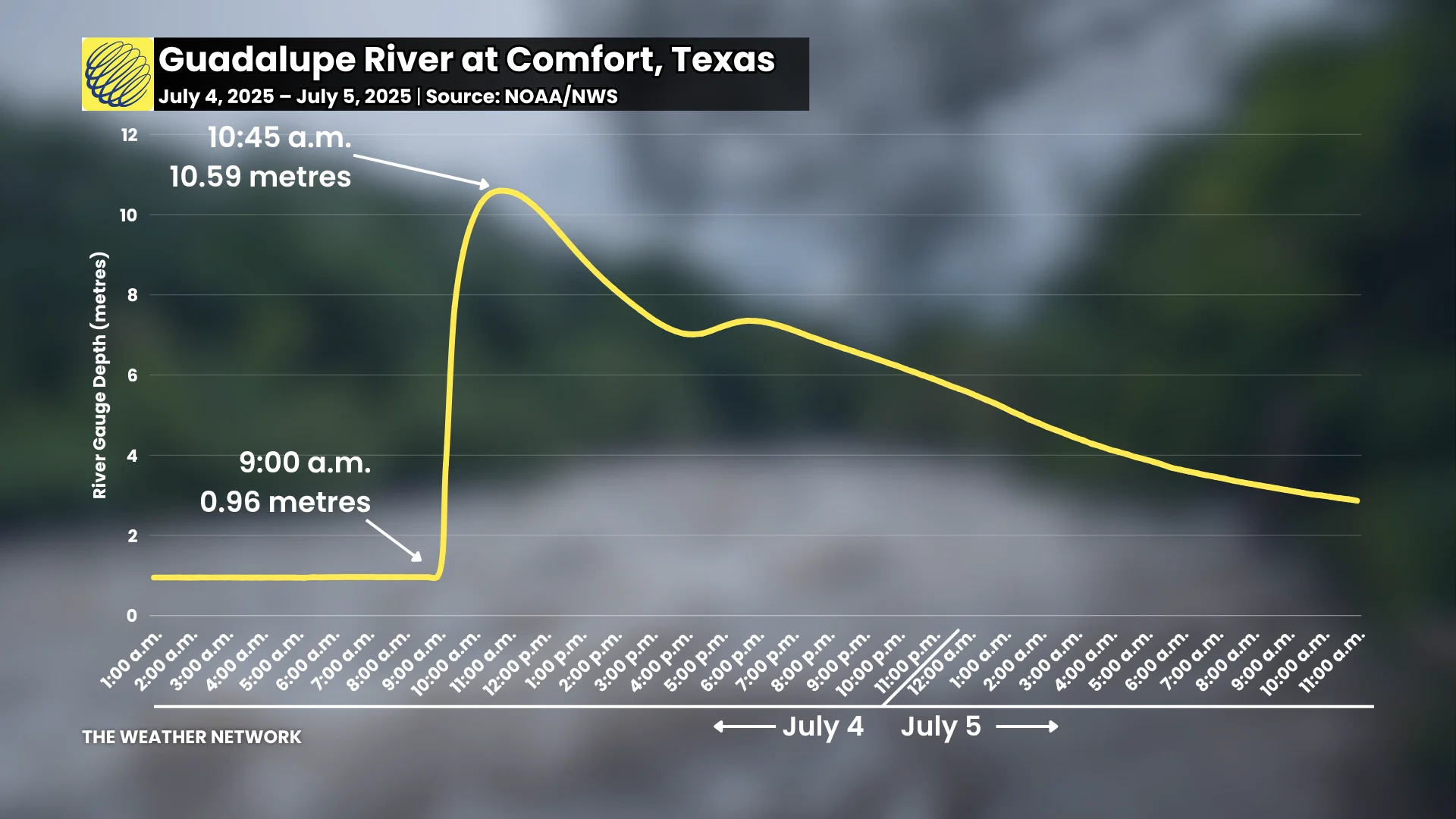
RELATED: Texas storms triggered a 'large and deadly flood wave'
Tropical Storm Chantal trekked over North Carolina later that same weekend, producing almost 300 mm of rain west of the city of Raleigh. The glut of heavy rain swelled the Haw River near Burlington to its second-highest crest on record.
Torrential rains on July 8 caused the Rio Ruidoso in central New Mexico to surge beyond its banks, sweeping away homes and killing at least three people.
A substantial thunderstorm that moved over New York City on July 14 dumped more than 50 mm of rain on Central Park over the course of one hour, marking the second-highest one-hour total ever observed at the location, where weather records stretch back to the late 1800s.
The causes of flash flooding are diverse and complex
Heavy rain is the common thread that ultimately causes waters to rise. But not every downpour leads to chaos. What’s so different about the setup this year?
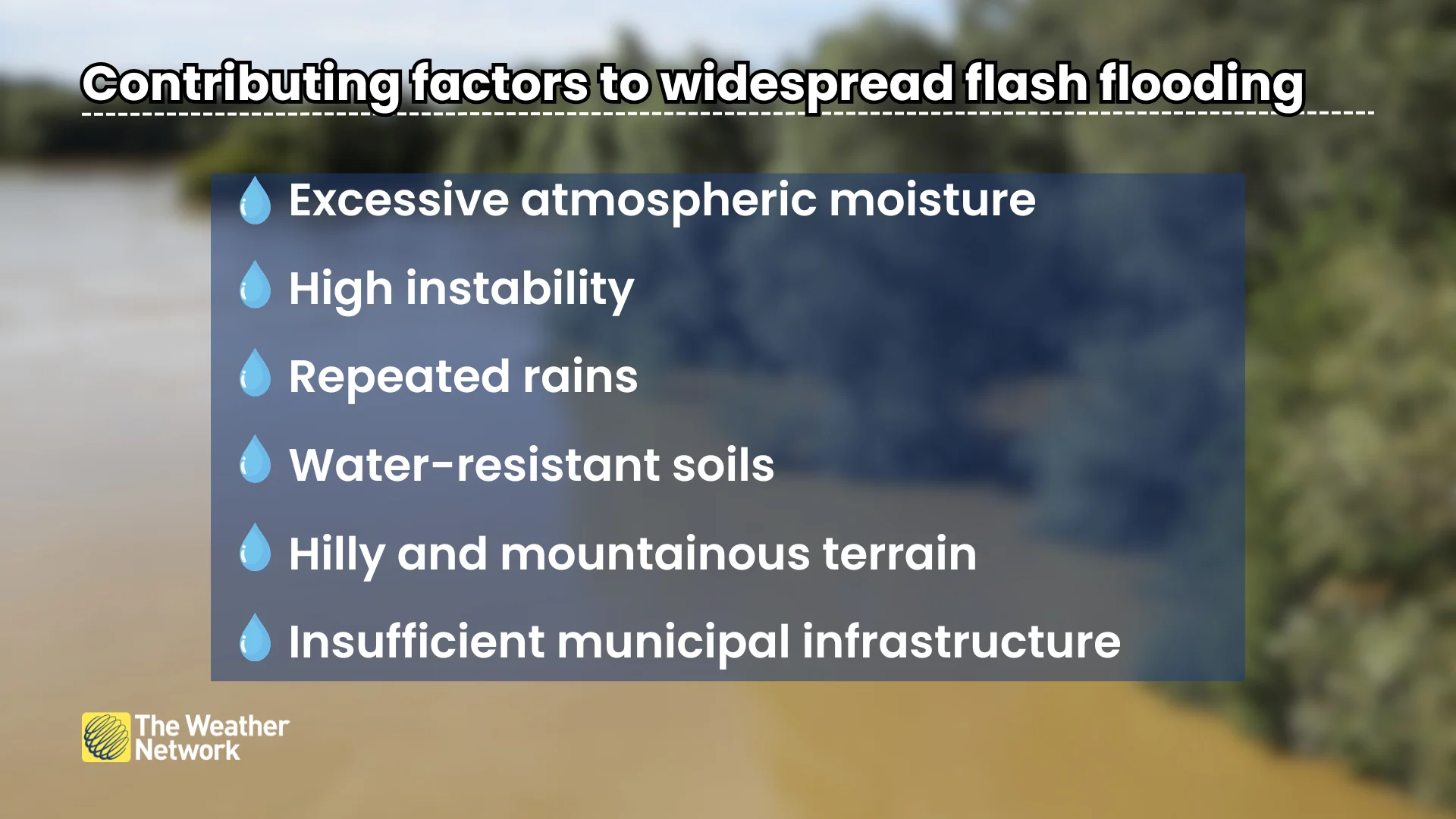
RELATED: 'Feel' miserable out? How our bodies react when humidex values soar
Excess moisture is the most immediate cause. It’s no secret that it’s been a very humid summer—even on the Canadian side of the border. The wealth of humidity in the atmosphere has fuelled unusually robust downpours across the U.S. High instability, rich humidity, and generally favourable overall conditions are ripe for thunderstorms with torrential rains.
These intense rainfall rates can easily overwhelm storm sewers like those in New York City, causing surreal scenes like subways filling with water. This is a problem that will only get worse as we experience climate change.
Repeated rains are no help. One heavy rainstorm after another takes a significant toll on a community’s ability to handle runoff.
Saturated soils struggle to absorb additional rainfall. Swollen waterways can only handle so much runoff before they spill their banks. Many of the areas hit by flooding this year saw one downpour after another in quick succession.
Some soils are resistant to water, meaning that rain runs off rather than readily absorbing into the ground. This is especially true in places like New Mexico.
Hilly and mountainous terrain funnels rainfall runoff to the valleys and basins at lower elevations. On top of swollen waterways and rain-soaked soils, this was the factor that exacerbated the flooding in places like Kentucky and West Virginia.
Contains files from NPR. Header image courtesy of the Chatham County, N.C., Sheriff's Office.
